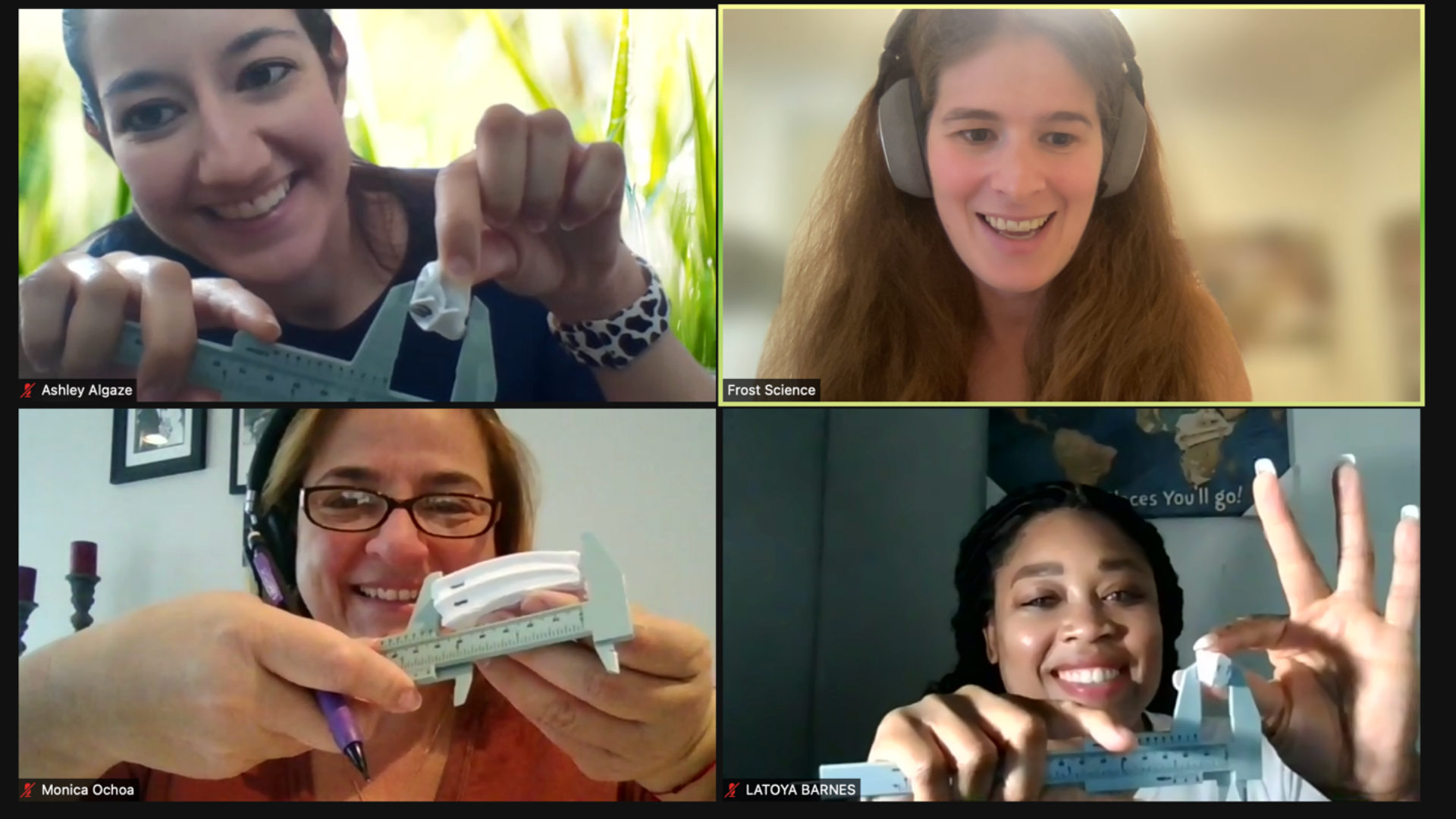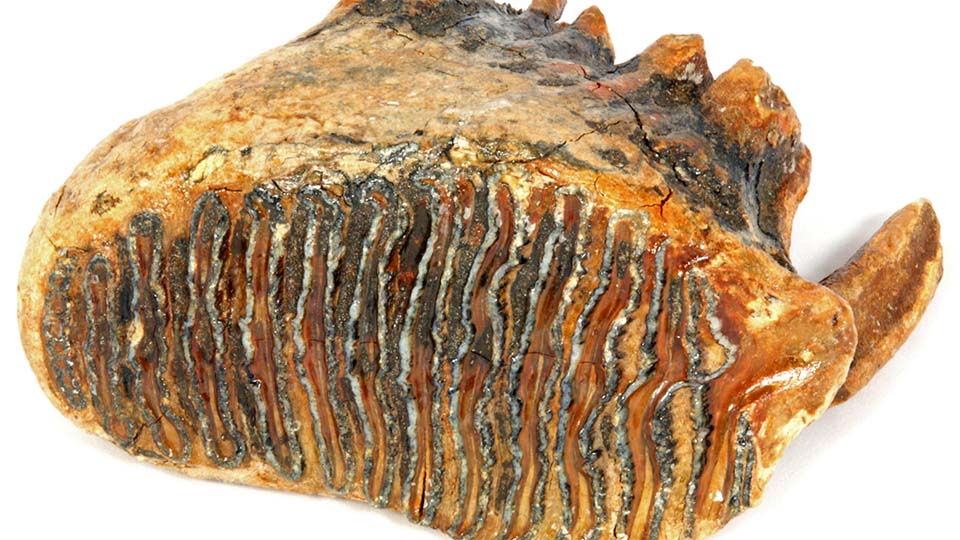
“Do I have a mesostyle?”
There’s a teacher holding a pair of calipers up to a molar that’s five inches long, contemplating whether the specific bit of anatomy she’s measuring is found in her own mouth. While most humans will have to live their lives without a mesostyle, it shows the power of hands-on interactives to make science engaging and relevant. With the help of the Florida Museum of Natural History and the University of Florida’s Scientist in Every Florida School initiative, and inspired by the Mammoths: Ice Age Giants exhibition, the Phillip and Patricia Frost Museum of Science was able to bring fossils to life.
On January 22, 2022, 17 Miami-Dade County Public School teachers joined University of Florida’s Dr. Bruce MacFadden and myself for a professional development session, “Adaptations, Evolution and Climate Change.” The teachers completing the PD taught 6-10th grades, covering chemistry, biology, environmental science and more.
Dr. MacFadden is an expert on fossil horse teeth (and in fact attended the PD bedecked in a fossil horse tooth hat.) However, despite literally writing the book on the subject, his goal was to help teachers use manipulatives and digital technology to make evolution and climate change tangible for teachers and their students. Working with teachers, his team has created a curriculum called “Chewing on Change” where students measure fossil horse teeth over time and relate the changes in tooth size to climate. During our PD, teachers checked out the activity before trying it in their own classrooms.
For those of you wondering why horse tooth evolution can help illustrate under climate change, you just have to look at the ground. Horses are grazers, which mean they eat grass and shrubs. If you’ve ever eaten unwashed cilantro and had the uncomfortable sensation of biting down on grit, you’ve experienced the daily struggle of horses and other animals that eat diets high in grass. These silicates not only feel strange to eat but also wear down the teeth much faster than any other food source. As it is difficult to live without teeth, individuals lived longer when they had longer teeth that could resist wearing down. Horses grew long teeth that could wear down over many years, allowing them to thrive on grassy diets. As the climate over the past 40 million years became cooler and dryer, horse teeth became longer and more wear-resistant.
Of course, horses weren’t the only animal that developed adaptations to resist tooth wear. Mammoths also evolved teeth to resist wear, though these adaptations did not prevent the species extinction about 4,000 years ago. In the second part of the PD, teachers went on a virtual tour of Frost Science’s new exhibition and worked on a lesson all about the extinction of large animals. Their students will have to gather evidence to determine whether it was human activity or climate change that led to the woolly mammoth’s extinction.

Teachers will be implementing these lessons in their classrooms this spring with some hands-on surprises for their students. MacFadden is sending classroom sets of 3D-printed fossil horse teeth to every teacher in attendance. Each teacher will also be able to bring their class to Frost Science for a free field trip to check out the mammoths exhibition and other tie-ins to evolution and climate change. These initiatives are all part of Frost Science’s goal of removing barriers to accessing hands-on science education in our diverse South Florida community.
MacFadden also oversees the Scientist in Every Florida School program, which provides cutting-edge science experiences to K-12 students and teachers, including scientist classroom visits, professional development resources and live virtual events. If you are a Florida teacher or student hoping to learn more about climate change and evolution, check out the website or visit Mammoths: Ice Age Giants at Frost Science.